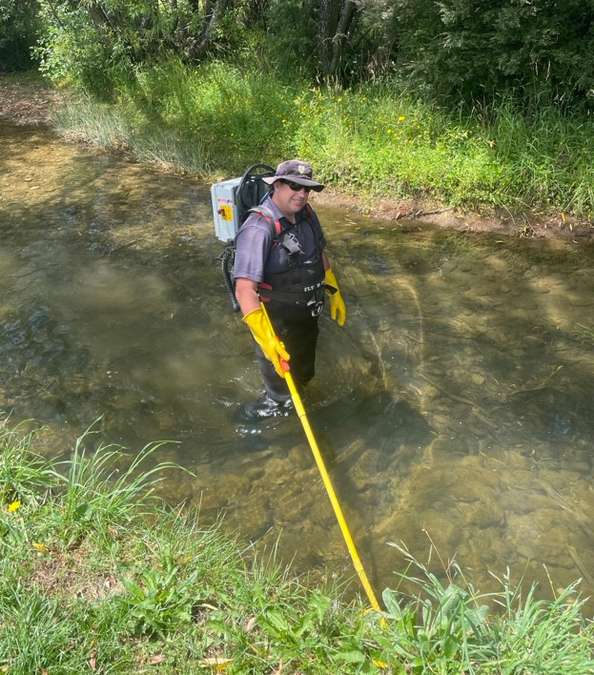2025 River Electro-fishing Surveys


During January and February this year, the Inland Fisheries Service (IFS) completed a series of back-pack electro-fishing surveys in rivers and creeks across the north-east, north-west and south of Tasmania. These surveys were conducted in response to angler feedback and high cormorant numbers reported from late 2023 to early 2025.
Several factors were considered when selecting the survey sites including, availability of historical data at the same locations, a focus on tributaries that serve as nursery systems for the main rivers and ensuring a geographical spread of representative locations across the state.
A total of 16 sites were surveyed where a 100-metre section of each river or creek was electro-fished for three consecutive runs.
Trout were found in 14 of the 16 locations – with an average of eight fish caught per site and catches of one to 25 fish. The trout were on average 96 grams, with sizes ranging from 3 grams to 475 grams.
The results are being compared to historical electro-fishing surveys undertaken at many of the same locations, in particular, surveys that were conducted during 1978, 1985, 1998-2003 and 2012-2018.
Two of these historical surveys, 1978 and 2012, were conducted in response to reports of high cormorant numbers and are therefore comparable to recent events. The results of the surveys undertaken between 2012 and 2018 provide the IFS with an understanding of what to expect in the next few years while rivers recover as well as highlighting the resilience of natural trout populations and their ability to bounce back quickly. The surveys at Mersey, Forth and Meander rivers from 1998 to 2003 provide a sense of what rivers in the north-west should look like in unaffected years.
While the historical comparisons are useful, some of the sites and habitats have changed significantly since the earlier survey work, being subjected to significant flooding events as an example. It is also difficult to make inferences about an entire river or creek system based on a 100-metre survey. Therefore, the results are indicative only, but they do provide a contemporary baseline for the IFS to compare with planned monitoring over the coming seasons. This will help inform future management strategies.
In recent weeks, the IFS has collected wild trout ova which are being incubated at the New Norfolk and Salmon Ponds hatcheries. Pending confirmation of good egg survival, the fry will be used to strategically stock some of the most heavily impacted river locations, based on the recent survey results, to help complement the natural recruitment in those systems and assist the recovery of trout populations over the coming seasons.
To maximise the value of available fry, and to increase the chances of fry survival, stockings will be prioritised based on habitat and water quality, water availability and angling popularity of the target water. Stocking the fry into areas that have plenty of cover, cobbles and weeds beds, will provide the best possible chance of survival.
For the upcoming season, anglers are encouraged to practice catch and release on our rivers to further aid recovery of trout stocks.
Once complete, the river survey report will be published on the IFS website.